Ever spent $300 in a single day in New York? In India, that same amount can fund an entire month of incredible adventures. No exaggeration.
I’ve criss-crossed India three times on budgets that would barely cover a weekend anywhere else. And I’m about to share exactly how you can travel India on a shoestring budget without sacrificing the experiences that matter.
The secret isn’t just knowing where to find $3 hotel rooms or 30-cent street food feasts. It’s understanding how to navigate a country where luxury and poverty exist side by side, where tourist prices and local prices can differ by 1000%.
But here’s what most budget travel guides won’t tell you about India…
Planning Your Budget Trip to India
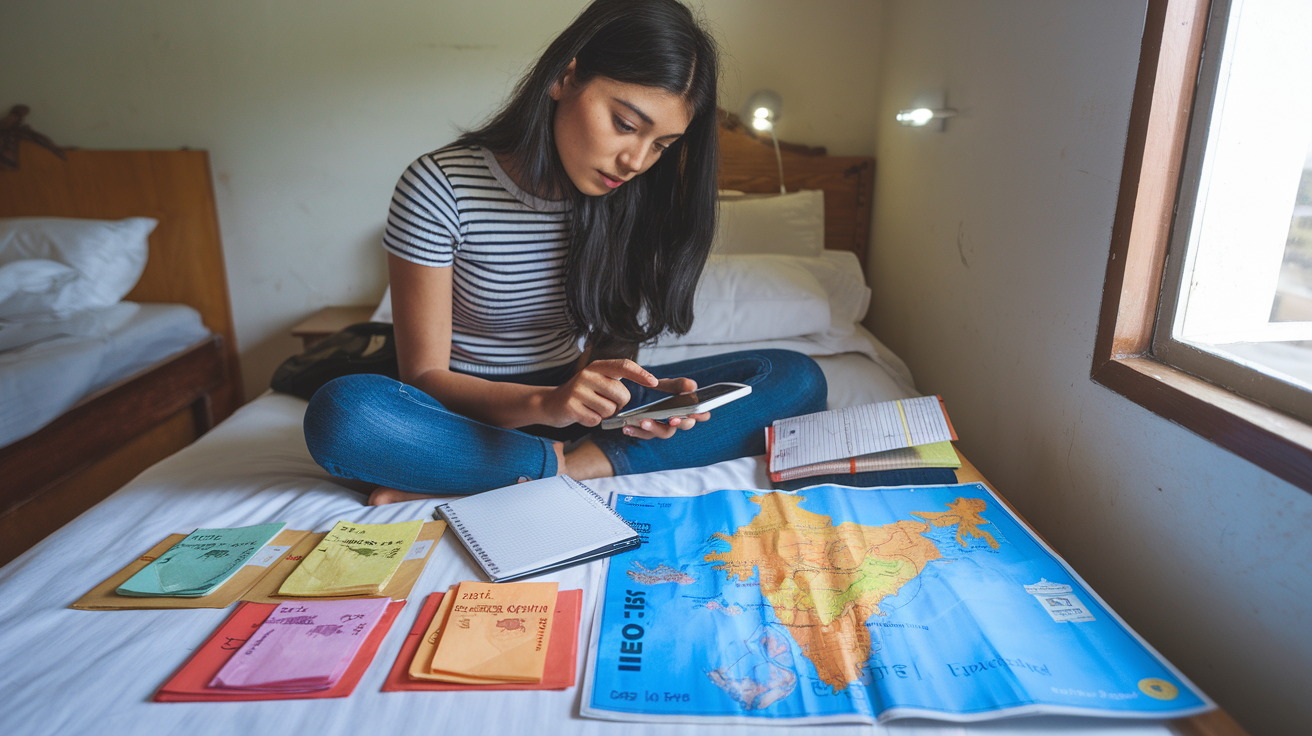
Best Time to Visit for Budget Travelers
The sweet spot for budget travel in India? Off-season, hands down.
June to September brings monsoons across most of India. Yeah, it rains. Sometimes a lot. But here’s the thing – prices drop by 30-50% on everything from hotels to activities. Most tourists stay away, and you’ll find incredible deals everywhere.
October to March is peak season with perfect weather, but your wallet takes the hit. April and May? Scorching hot in most regions, but dirt-cheap if you can handle the heat.
Here’s a quick breakdown:
| Season | Months | Budget Level | Crowds | Weather |
|---|---|---|---|---|
| Monsoon | June-September | Super cheap | Very few tourists | Wet, humid |
| Shoulder | April-May & October | Moderate | Fewer tourists | Hot or pleasant |
| Peak | November-March | Expensive | Crowded | Perfect |
For the ultimate India on a shoestring experience, aim for early October or late March. You’ll catch decent weather without the peak season prices.
Essential Cost-Saving Travel Documents
Don’t sleep on this part of planning – the right paperwork saves serious cash.
First up, your e-Visa. Apply online at least 4 days before travel and pay only $25 for a 30-day tourist visa. That’s $50 cheaper than getting it on arrival.
International Student Identity Card (ISIC) – worth its weight in gold. For about $20, you’ll get discounts at museums, historical sites, and even some transportation. Many Indian tourist spots have different prices for locals and foreigners – this card often gets you somewhere in between.
Travel insurance might seem like an extra expense, but getting sick in India without it? Financial disaster. Compare policies online and pick one with good coverage for about $40-50 per month.
Pro tip: Download the UPI payment apps before arriving. Cash transactions often come with “tourist pricing,” while digital payments usually get you the real local rate.
Setting a Realistic Daily Budget
I’m not going to sugarcoat it – your daily budget makes or breaks your India experience.
For hardcore backpacking India, $15-25 per day can work. This means:
- Dormitory beds ($3-7)
- Street food and local eateries ($3-5 per day)
- Public transportation
- Free or cheap attractions
Mid-range budget travelers should aim for $25-40 daily:
- Budget private rooms ($10-15)
- Mix of street food and casual restaurants
- Occasional taxi/Uber
- Paid attractions
Your biggest expenses? Transportation between cities and paid attractions. Save by taking overnight trains (which also saves on accommodation) and prioritizing which paid sites really matter to you.
For immersive culture walks in india, visit 5 senses walks.
Choosing the Right Duration for Maximum Value
The golden rule of budget travel in India: slower is cheaper.
Transportation costs eat budgets alive. Moving every few days means constant spending on trains, buses, and cabs. Staying in places longer? Your daily average plummets.
For a truly budget-friendly experience, I recommend minimum 3 weeks, ideally 4-6 weeks. This lets you:
- Negotiate weekly discounts on accommodation (often 30% off)
- Master local transportation systems
- Find cheap food spots the tourists don’t know about
- Skip the expensive internal flights
The first week in India always costs more while you figure things out. By week two, you’ll slash your daily costs by about 30% just from knowing better.
Budget-Friendly Accommodation Options
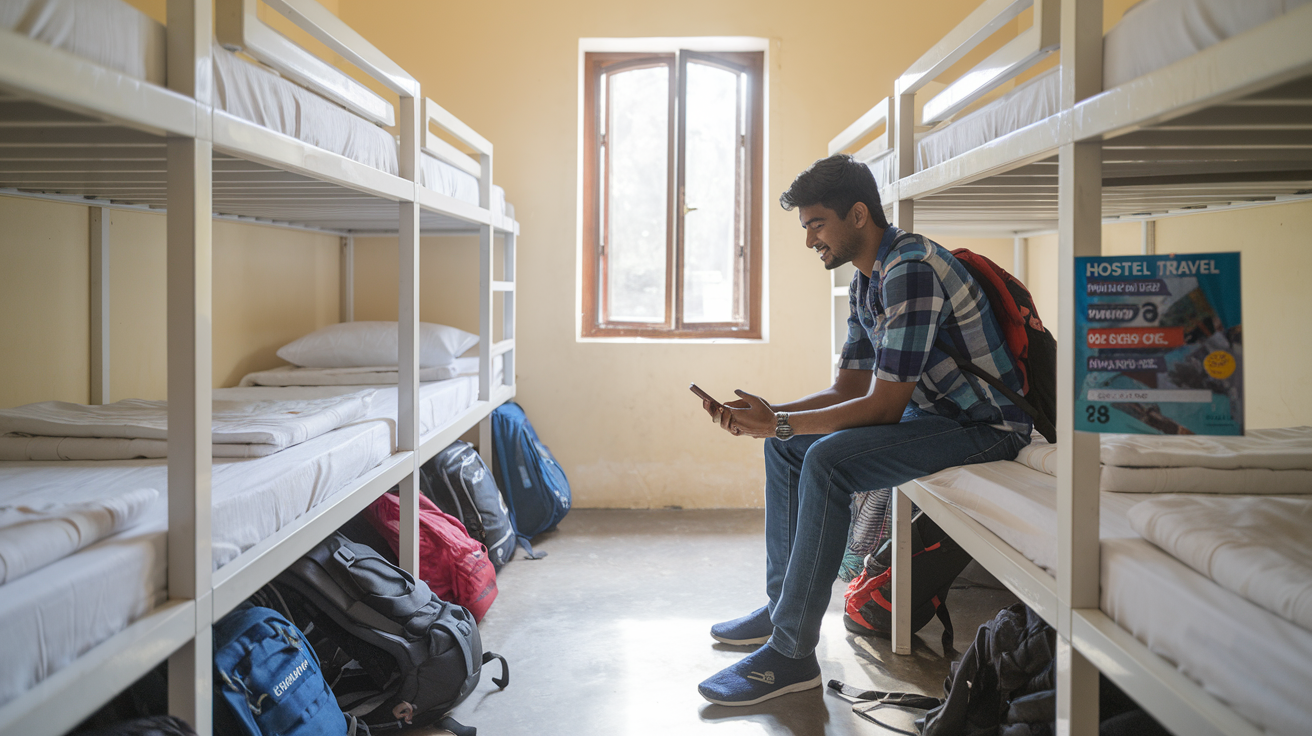
A. Hostels and Backpacker Guesthouses
Got ₹300-500 to spare for a night’s sleep? You’re in luck. India’s hostel scene has exploded in recent years. Places like Zostel, Backpacker Panda, and goSTOPS have popped up in nearly every major tourist hub from Leh to Kochi.
The best part? These aren’t your grimy, bare-bones hostels of the past. Most offer clean sheets, hot showers, free Wi-Fi, and those all-important charging points. Plus, they’re social hotspots. Need tips on the cheapest way to reach Hampi or where to find the best ₹50 thali in Jaipur? Just ask your dorm mates.
Pro tip: Book directly through hostel websites instead of aggregators—you’ll often save 10-15% on your stay.
B. Homestays with Local Families
Want the real India experience? Skip hotels entirely and crash with local families. Homestays typically run ₹600-1000 per night, usually including home-cooked meals (often the best food you’ll eat during your entire trip).
In Kerala’s backwaters, mountain villages of Himachal, or rural Rajasthan, families open their homes to travelers, offering simple rooms and cultural immersion you can’t buy elsewhere.
Apps like Airbnb have made finding homestays easier, but the truly budget options often fly under the digital radar. Ask other travelers or check community bulletin boards in popular areas for better deals.
C. Temple Stays and Ashrams
Spiritual seekers, listen up. Many temples and ashrams across India offer accommodation for next to nothing. Some ask only for donations, while others charge ₹200-400 per night including simple vegetarian meals.
Places like Rishikesh and Varanasi are loaded with ashrams welcoming foreigners. The catch? You’ll likely need to participate in morning meditation, yoga, or other spiritual practices. And forget about luxury—rooms are basic, often with shared bathrooms and early curfews.
Still, for rock-bottom prices in some of India’s most expensive tourist areas, you can’t beat the value.
D. Couchsurfing and Hospitality Networks
Completely broke? Couchsurfing is still alive and well in India. Urban centers like Mumbai, Delhi, and Bangalore have active hosting communities offering free accommodation.
Beyond just free digs, local hosts provide insider knowledge that no guidebook can match. They’ll point you to the ₹10 chai stall that locals actually frequent and tell you which tourist traps to avoid.
Alternative networks like BeWelcome and TrustRoots are worth checking too, especially in less touristy areas where Couchsurfing hosts might be scarce.
E. Budget Hotel Chains Worth Considering
Sometimes you just need a private room with a door that locks. Budget chains like FabHotels, Treebo, and OYO Rooms offer clean, basic rooms starting around ₹800-1200 per night.
The benefit? Consistency. You know exactly what you’re getting: clean sheets, private bathroom, and often AC—a serious luxury when you’ve been roughing it for weeks in the summer heat.
Look for off-season deals or longer-stay discounts, which can bring prices down by 30% or more.
Transportation Hacks Across India
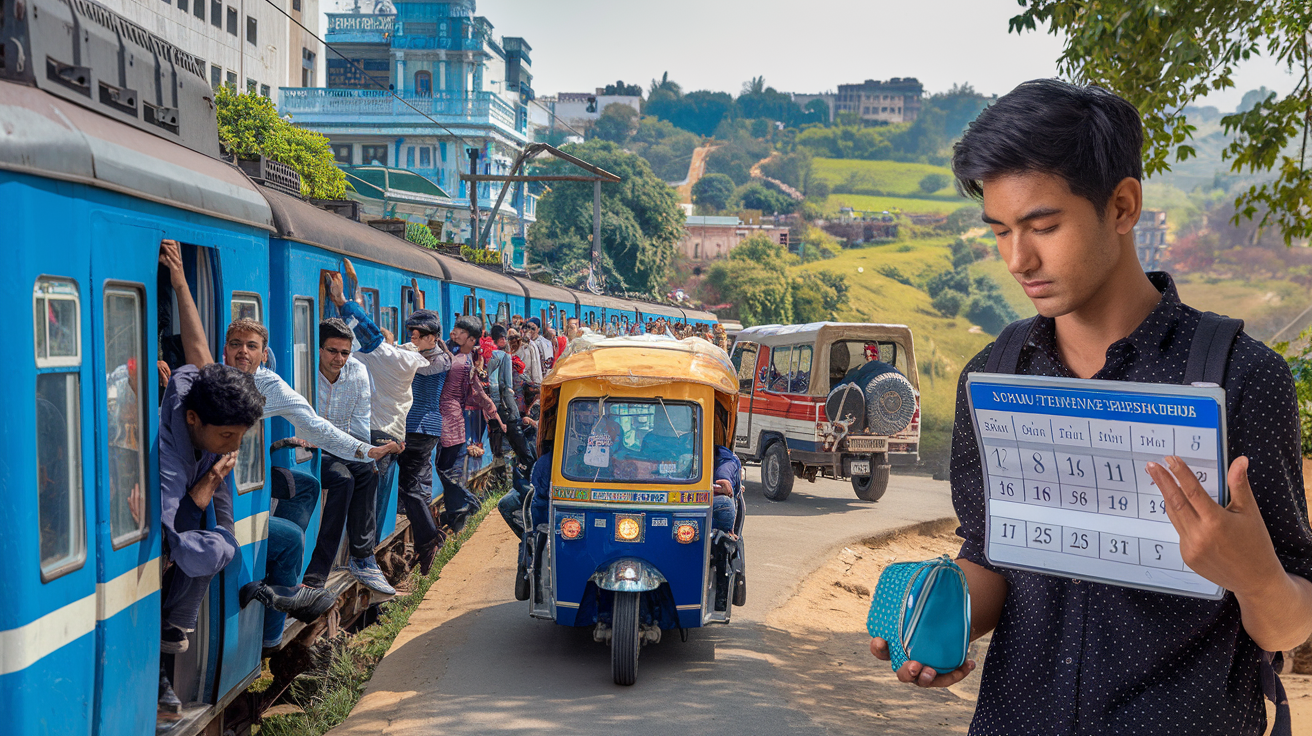
Navigating the Extensive Railway System
Look, if you’re serious about traveling India on a shoestring, the railway is your best friend. I’m talking dirt-cheap fares that’ll get you across this massive country without emptying your wallet.
Grab yourself an IRCTC account (Indian Railway’s official booking platform) ASAP – tickets open 120 days before travel and the good seats vanish faster than street food at a busy market. The Sleeper Class is where the budget magic happens. Sure, it’s basic, but you’ll save serious cash while getting the authentic Indian travel experience.
Pro tip: The Tatkal scheme lets you book emergency tickets 24 hours before departure. Slightly pricier but a lifesaver when plans change.
Foreign travelers, listen up – the Indrail Pass is practically made for you. Unlimited travel for a fixed period? Yes, please!
Sleeper Buses for Overnight Journeys
When trains aren’t an option, overnight sleeper buses are your next budget move. You’re basically getting transportation AND accommodation in one go.
Government buses cost less but private operators like RedBus offer more comfort. For longer routes, spring the extra ₹100-200 for a semi-sleeper or full sleeper – your back will thank you the next day.
Women traveling solo: always book upper berths for privacy and safety. And please, don’t book the last row – it’s bumpier than a camel ride through the desert.
Auto-Rickshaws and Local Transport Tips
City transport in India is where budget travelers either win big or get totally fleeced.
Auto-rickshaws are everywhere, but here’s the deal – ALWAYS negotiate before getting in. Start by offering half the quoted price and settle around 70% of what they initially asked. In many cities, insist on the meter – it’s literally the law.
City buses are ridiculously cheap (often under ₹20) but they’re packed tighter than a Mumbai local train. Worth it if you’re counting every rupee.
Download Ola or Uber – sometimes shared rides cost the same as those rickshaws, with actual AC and no haggling drama.
When to Splurge on Domestic Flights
Normally I’d say avoid flights when backpacking India, but sometimes spending more actually saves money.
For routes like Delhi to Kerala or Mumbai to Northeast India, a ₹2,500 flight can save you 30+ hours of travel time. That’s an extra day of experiences instead of being stuck on a train.
Look for flash sales from IndiGo, SpiceJet, and AirAsia India – they sometimes drop fares to just ₹999. Subscribe to their alerts and pounce when they happen.
The sweet spot for booking is 6-8 weeks before travel. Any earlier or later and you’re probably paying too much.
Eating Well Without Breaking the Bank
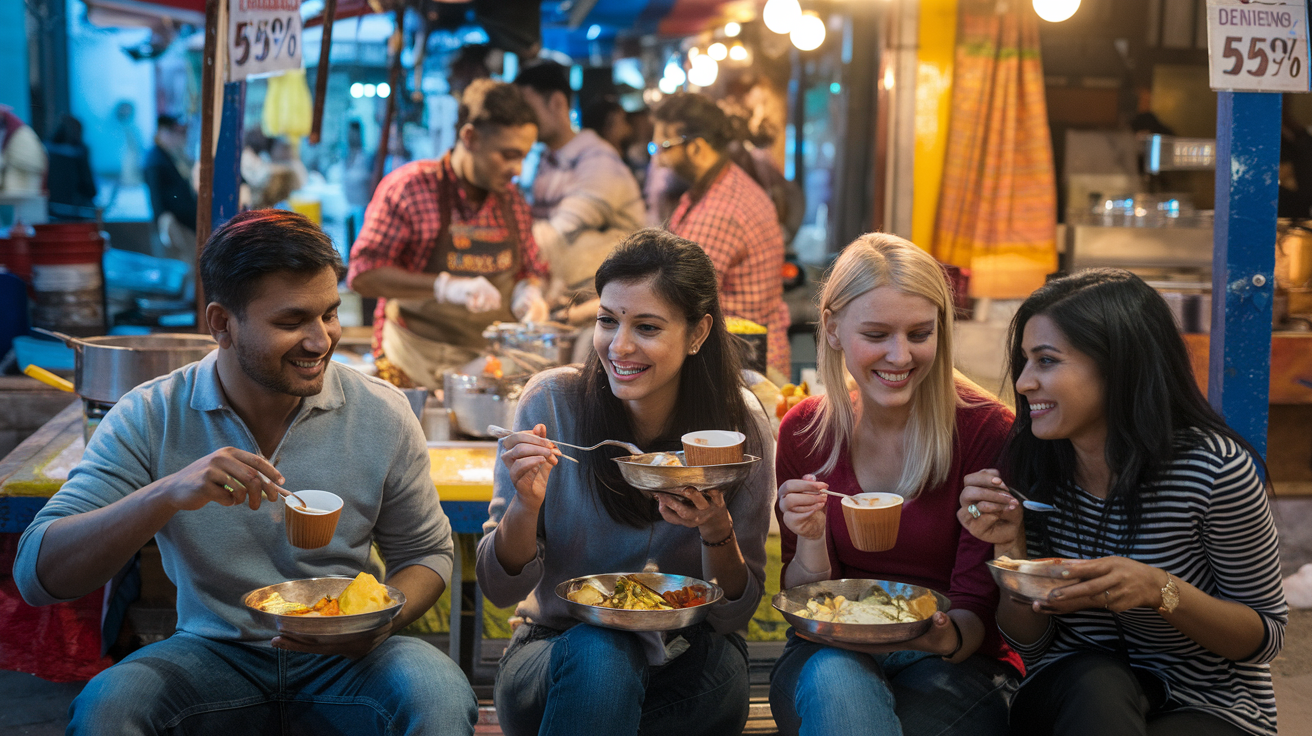
Street Food Safety and Must-Try Dishes
India’s street food scene is legendary, and honestly, it’s where budget travelers strike gold. A full meal can cost you under $2, packed with flavors that’ll blow your mind.
First, let’s talk safety because nobody wants Delhi belly ruining their trip:
- Pick stalls with crowds of locals (they know what’s good)
- Watch if the vendor is handling food and money with the same hand (red flag!)
- Stick to freshly cooked, hot food you can see being prepared
- Avoid raw veggies and unpeeled fruits unless you’re washing them yourself
- Carry a reusable water bottle and some basic meds just in case
Now for the fun part – what to eat while backpacking India:
In North India, don’t miss chole bhature (spicy chickpeas with fried bread) or aloo tikki (crispy potato patties). Delhi’s paranthe wali gali in Old Delhi serves stuffed parathas that’ll keep you full for hours for just 50-70 rupees.
Head south and try dosas – crispy rice pancakes with potato filling and coconut chutney. A massive paper dosa costs around 80-100 rupees and makes for an Instagram-worthy meal too.
Filter kaapi walk is a food walk in Bangalore.
In Mumbai? Vada pav is the city’s soul food – a spicy potato fritter in a bun with chutneys for 15-20 rupees. It’s basically India’s answer to the burger but costs pennies.
If you want to know about Indian street food, check the Ultimate guide to Indian street food.
Thali Meals: The Ultimate Budget Feast
Thali meals are the budget traveler’s best friend. You get a complete balanced meal with multiple dishes for often less than $3.
What makes thalis perfect is they change by region, so you’re trying new stuff constantly:
- Rajasthani thalis feature lots of ghee, buttermilk and spicy dishes
- Gujarat offers sweeter flavors with their unlimited thalis (yes, unlimited refills!)
- South Indian thalis come on banana leaves with rasam, sambar and chutneys
- Bengali thalis include fish and sweeter dishes
The magic words? “Unlimited thali.” Many places, especially in Gujarat, offer all-you-can-eat thalis for 100-150 rupees. That’s crazy value when you’re traveling India on a shoestring.
Self-Catering Options in Different Regions
Sometimes cooking your own meals makes sense, especially during longer backpacking trips across India.
In major cities, you’ll find:
- Local markets where produce costs a fraction of western prices
- Budget hostels with communal kitchens (increasingly common in places like Goa, Rishikesh and Manali)
- Simple portable equipment like immersion heaters for making tea/coffee
Regional shopping tips:
- Northern India: Stock up on cheap nuts and dried fruits from local vendors
- Coastal areas: Fresh seafood from morning markets costs pennies compared to restaurants
- Hill stations: Local mountain produce like apples in Himachal Pradesh are incredibly affordable
Many hostels in backpacking hotspots now organize community cooking nights where everyone chips in – great for saving money and meeting other budget travelers on the India circuit.
Experiencing India’s Highlights for Less
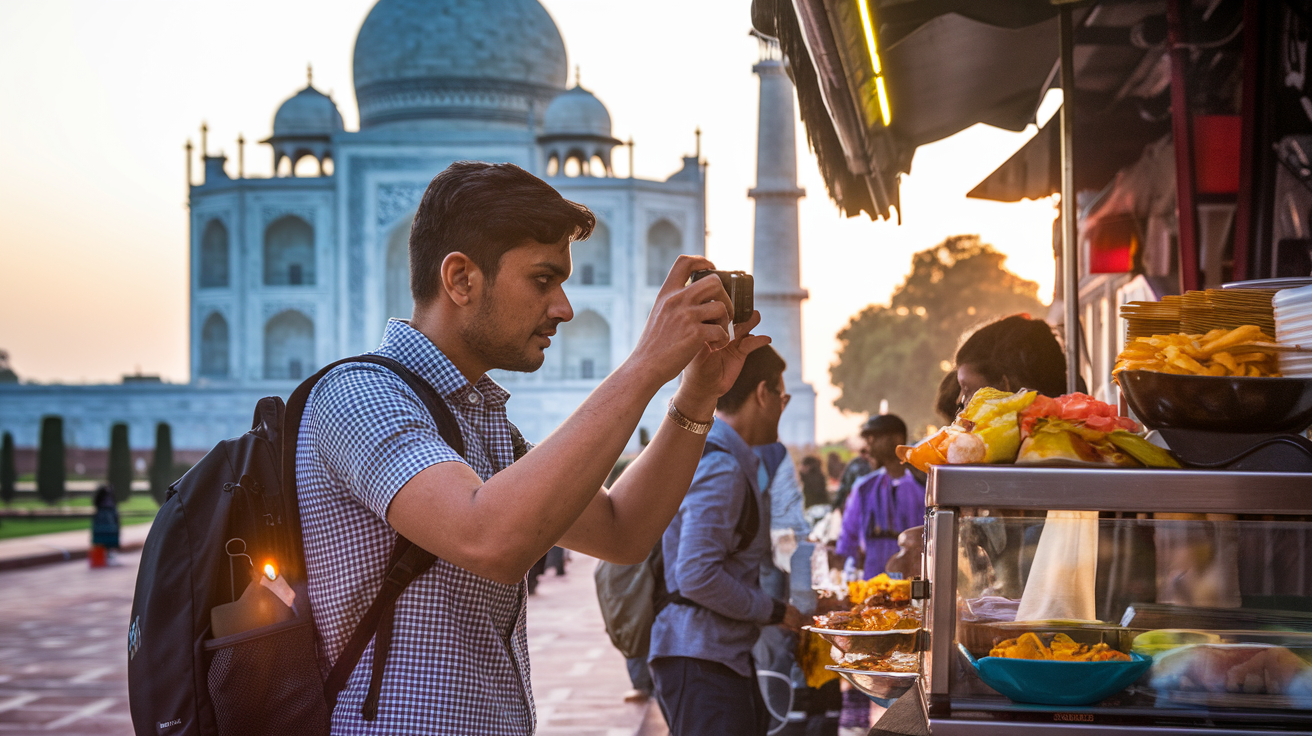
A. Free and Low-Cost Attractions
India’s got this crazy wealth of attractions that won’t drain your wallet. The best part? Many of India’s most jaw-dropping sights cost next to nothing.
In Delhi, you can wander through the gorgeous Lodhi Gardens for free. It’s this stunning park with ancient tombs and monuments that’ll give you serious Instagram material. The Red Fort only costs about 35 rupees (less than $0.50) for Indian nationals and 500 rupees for foreigners.
Mumbai’s Marine Drive won’t cost you a penny. Just park yourself on the seawall at sunset and watch the “Queen’s Necklace” light up as darkness falls. Pure magic.
B. Temple Tours and Religious Sites
Religious sites are India’s budget traveler’s best friend. Most Hindu temples are completely free to enter, though some may request a small donation.
The Golden Temple in Amritsar? Totally free. And get this – they’ll even feed you! Their langar (community kitchen) serves free meals to thousands daily. The spirituality here is off the charts, and it won’t cost you a rupee.
In Varanasi, watching the evening Ganga Aarti ceremony from the ghats is free. Sure, boat rides cost money, but sitting on the steps with locals? That’s the authentic experience anyway.
C. Nature Experiences on a Budget
India’s natural beauty doesn’t come with a hefty price tag. Beaches in Goa or Kerala? Free. Mountain views in Himachal Pradesh? Just the cost of getting there.
Hiking trails around Dharamshala or McLeod Ganj cost nothing but your energy. The views of snow-capped Himalayas? Priceless.
Wildlife enthusiasts, listen up. While national parks have entry fees (around 150-500 rupees for Indians, more for foreigners), they’re still way cheaper than safari experiences elsewhere in the world.
D. Cultural Immersion Without the Price Tag
The real India isn’t in expensive shows or museums – it’s in the streets, markets, and daily life. And that stuff? Mostly free.
Hit up local festivals happening year-round. Whether it’s Holi in the north or Pongal in the south, you’ll get authentic cultural experiences just by showing up.
Language exchanges cost nothing. Strike up conversations with locals at chai stalls. Most Indians speak some English and love sharing their culture with visitors.
Street art in cities like Delhi and Mumbai offers free walking tours. The vibrant murals of Lodhi Colony or the fishing villages of Sassoon Dock tell stories you won’t find in guidebooks.
E. Negotiating Fair Prices for Souvenirs
Shopping in India is an adventure. The trick is paying fair prices, not tourist prices.
Never accept the first price. Start by offering 40-50% of the asking price and expect to meet somewhere in the middle. But don’t be ruthless – remember, small differences to you might be significant to vendors.
Shop where locals shop. Those touristy markets in Delhi and Jaipur? They’re gorgeous but pricey. Find local markets for better deals on similar items.
The magic phrase? “I’m living here, not a tourist.” This often gets you more reasonable starting prices. Learn basic numbers in Hindi to show you’re savvy about prices.
Regional Budget Breakdown
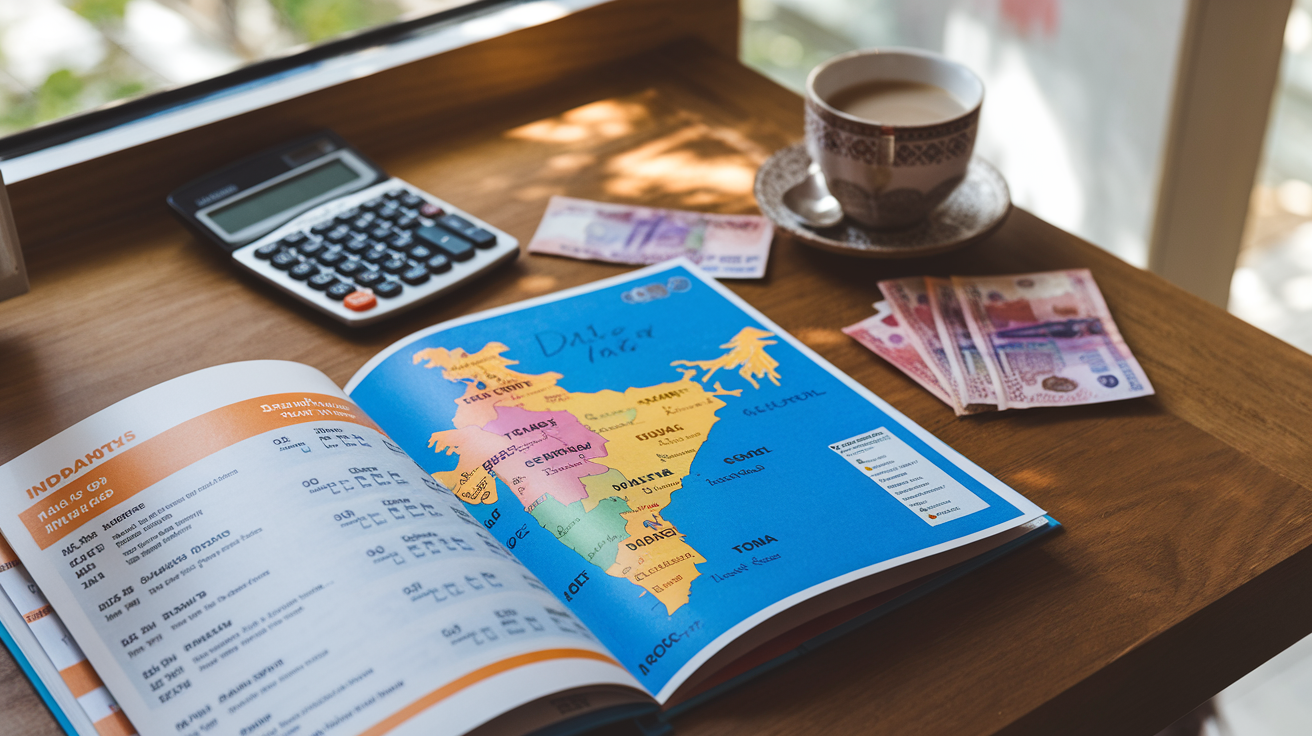
A. North India on a Shoestring
I’ll cut to the chase – North India is where your rupees can stretch the furthest. I’ve crisscrossed this region multiple times and consistently spent under ₹1,000 ($12) daily.
Delhi might seem overwhelming, but it’s a budget traveler’s playground. Skip the pricey hotels and grab a bed in Paharganj for ₹300-500 a night. The city’s metro costs pennies compared to taxis and connects you to every major sight.
In Varanasi, spiritual experiences don’t come with hefty price tags. Watching sunrise ceremonies along the ghats is completely free, and guesthouses run by local families offer rooms for ₹400-600 with breakfast included.
Here’s what daily costs look like in North India:
| Expense | Budget Option | Cost (₹) |
|---|---|---|
| Accommodation | Hostels/Guesthouses | 300-500 |
| Food | Street food/local eateries | 150-300 |
| Transport | Local buses/trains | 100-200 |
| Activities | Free temples/haggle for tours | 0-300 |
| Daily Total | 550-1,300 |
B. South India’s Affordable Treasures
South India has this reputation for being pricier than the north. That’s just plain wrong.
Tamil Nadu and Kerala offer incredible value if you dodge the obvious tourist traps. In Madurai, I found homestays for ₹600 with the most incredible homemade South Indian breakfasts thrown in.
The trick to beach destinations like Varkala or Gokarna? Go just one street back from the beach. Prices drop by 40-50% immediately, and you’re still only a 5-minute walk from the ocean.
South Indian thalis will become your best friend – unlimited refills for ₹80-150. They’re basically an all-you-can-eat buffet served on a plate.
Local buses in Kerala and Tamil Nadu are dirt cheap and surprisingly comfortable. For longer journeys, overnight sleeper buses save you a night’s accommodation cost.
C. Off-Beat Eastern Destinations for Less
Eastern India remains criminally undervisited, which means prices haven’t been inflated by mass tourism.
In Kolkata, I stayed in charming old-world guesthouses for ₹500-700 and feasted on egg rolls and chai for under ₹100. The city’s tram system costs next to nothing and is an attraction itself.
Venture into Odisha or Assam, and your budget travels reach extreme value territory. In Bhubaneswar, entire meals cost ₹60-100, and decent rooms go for ₹400-600.
The Northeast states offer homestays in tribal villages for ₹500-800 including meals – experiences you simply can’t put a price tag on.
D. Western India Without the Tourist Markup
Gujarat and Maharashtra can be done cheap if you know how.
Mumbai seems expensive until you discover its efficient local trains and vada pav stands. Stay in the less trendy suburbs, and accommodation drops to ₹600-800.
In Gujarat, I found dharamshalas (pilgrim resthouses) offering basic but clean rooms for ₹200-400. Perfect for no-frills travelers.
Even in touristy Goa, budget options exist. Head to Arambol or Mandrem in North Goa during shoulder season, and beach huts go for ₹600-1,000 – a fraction of high-season prices.
Essential Money-Saving Tips and Tricks

Bargaining Strategies That Actually Work
Look, haggling isn’t just helpful in India—it’s practically required. But there’s a fine line between getting a fair price and being that annoying tourist.
Start by knowing the actual worth of things. Chat with locals at your hostel or check online forums for current prices. Knowledge is your strongest bargaining chip when backpacking India on a shoestring.
Never show too much excitement about an item. The second your eyes light up, the price magically doubles. Stay cool, act slightly uninterested, and you’re already ahead.
My go-to opening move? Offer 40% of the asking price. They’ll look shocked (sometimes they’ll even laugh), but it sets the stage for meeting somewhere in the middle—which is exactly what you want.
Walking away works wonders. I can’t count how many times I’ve started to leave only to hear “Okay, okay, special price for you!” trailing behind me. But—and this is crucial—only walk if you’re genuinely willing to miss out.
Remember: bargaining is relationship-building. Smile, joke around, ask about their family. In smaller towns especially, friendly banter can knock rupees off your final price faster than aggressive haggling.
Avoiding Common Tourist Scams
India’s magical, but yeah, scammers target tourists everywhere. Staying alert doesn’t mean being paranoid—just street smart.
The “this attraction is closed” scam tops the list. Some smooth-talking “helpful local” will insist your destination is closed for a religious ceremony, then offer to take you somewhere “better” (their cousin’s overpriced shop). Double-check opening times beforehand and politely decline these redirections.
Taxi meter “malfunctions” happen mysteriously often. Before hopping in, agree on a price or confirm the meter works. Better yet, use Uber or Ola for cheap transportation in India with transparent pricing.
Watch for the classic “extra zeros” trick when exchanging money. Count your rupees carefully—twice—and never rush these transactions, no matter how impatient the cashier seems.
That “free” bracelet or dot of red powder on your forehead? Spoiler alert: not free. Once it’s on you, they’ll demand payment. A firm “no thank you” stops this before it starts.
Smart Phone and Internet Solutions
Data is ridiculously cheap in India, so there’s zero reason to roam with your home carrier. Grab a local SIM card—Airtel or Jio offer the best coverage for budget travel India adventures.
Getting a SIM is straightforward but bureaucratic. Bring your passport, a passport photo (have extras), and patience. The paperwork’s worth it when you’re paying roughly ₹300 ($4) for 1.5GB daily for a month.
Public WiFi exists but isn’t worth the security risk. With data this affordable, stick to your phone’s hotspot for laptop work.
Download these lifesavers before your trip:
- Google Maps offline maps
- Google Translate (Hindi package)
- IRCTC for train bookings
- Ola/Uber for city transport
Travel Insurance That’s Worth It
Skipping travel insurance to save a few bucks? Terrible idea. Medical care in India is affordable compared to Western prices, but a serious issue could still wreck your budget.
Look for policies covering:
- Medical evacuation (crucial in remote areas)
- Theft protection (for electronics especially)
- Trip cancellation (monsoons can derail plans)
- Adventure activities (if you’re heading to Rishikesh for rafting or Manali for trekking)
World Nomads works for most backpackers, but SafetyWing costs less if you’re traveling long-term. Either beats paying thousands out-of-pocket for an emergency flight home.
The cheapest option isn’t always best—aim for that sweet spot between coverage and cost. Check the deductible and claim process before buying—some budget options make claiming so complicated you’ll never see your money.

Traveling through India doesn’t require emptying your wallet. With careful planning, affordable accommodation choices, and smart transportation strategies, you can experience this diverse country authentically while keeping costs remarkably low. From sampling delicious street food to visiting iconic landmarks during off-peak hours, India offers countless opportunities to create unforgettable memories without financial strain.
Take the leap and start planning your budget-friendly Indian adventure today. Whether you’re exploring the bustling streets of Delhi, relaxing on Goa’s beaches, or trekking in the Himalayas, India rewards travelers who embrace local customs, venture beyond tourist hotspots, and approach their journey with flexibility and openness. With the money-saving strategies outlined in this guide, you’ll return home with not just incredible experiences but also a healthy travel fund for your next destination.
For experiencing India on a Royal Enfield motorcycle, visit 5 senses motorcycle tours.
Discover more from Great Holiday Ideas
Subscribe to get the latest posts sent to your email.